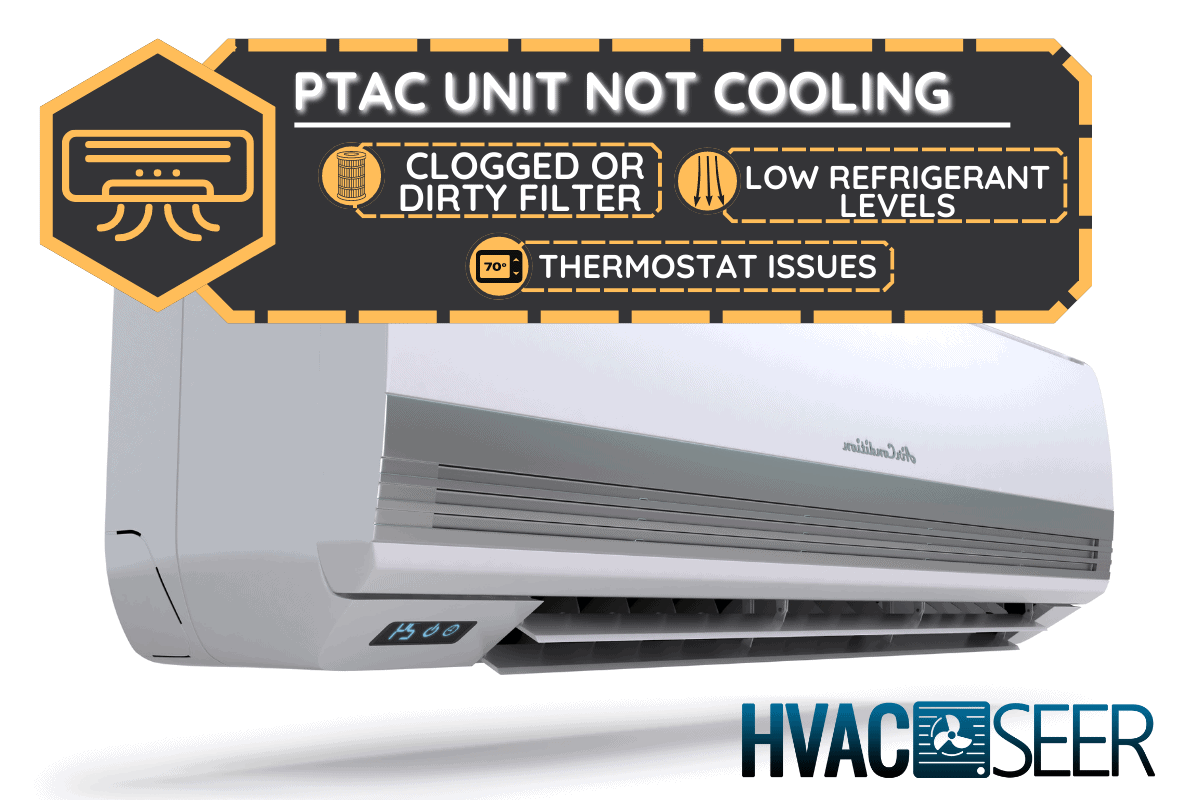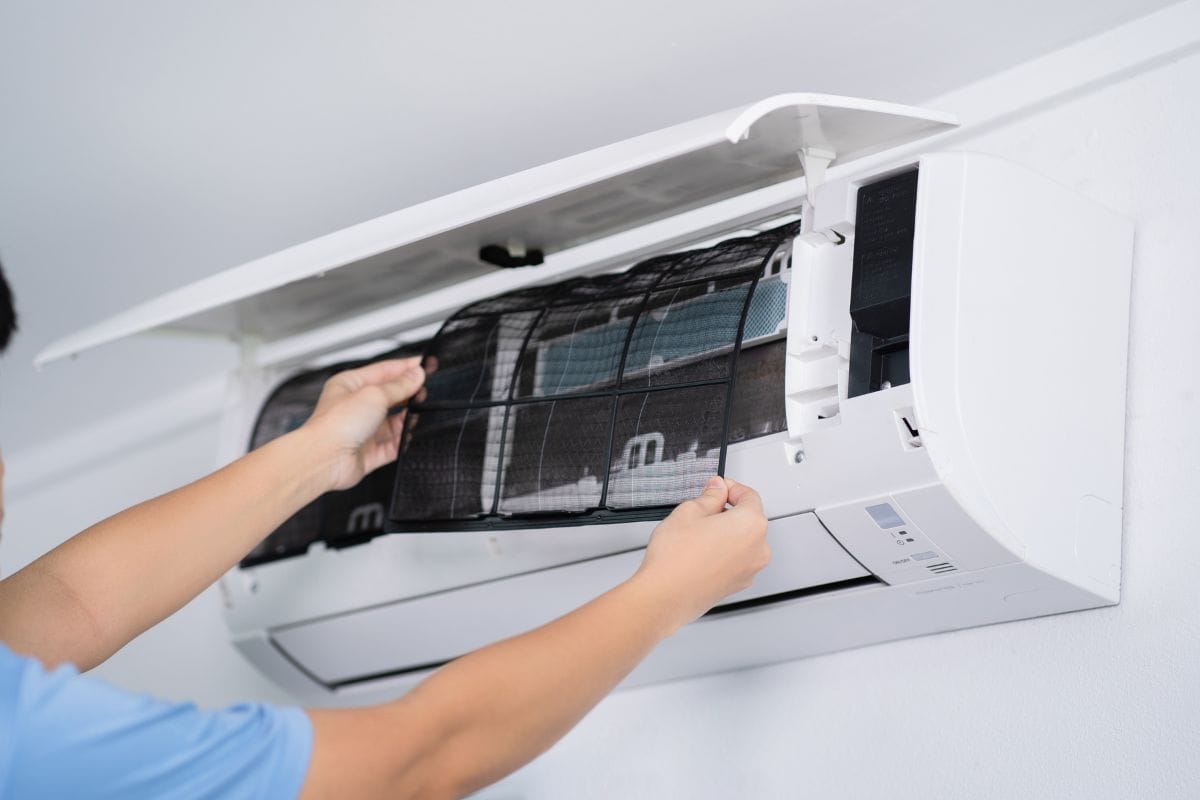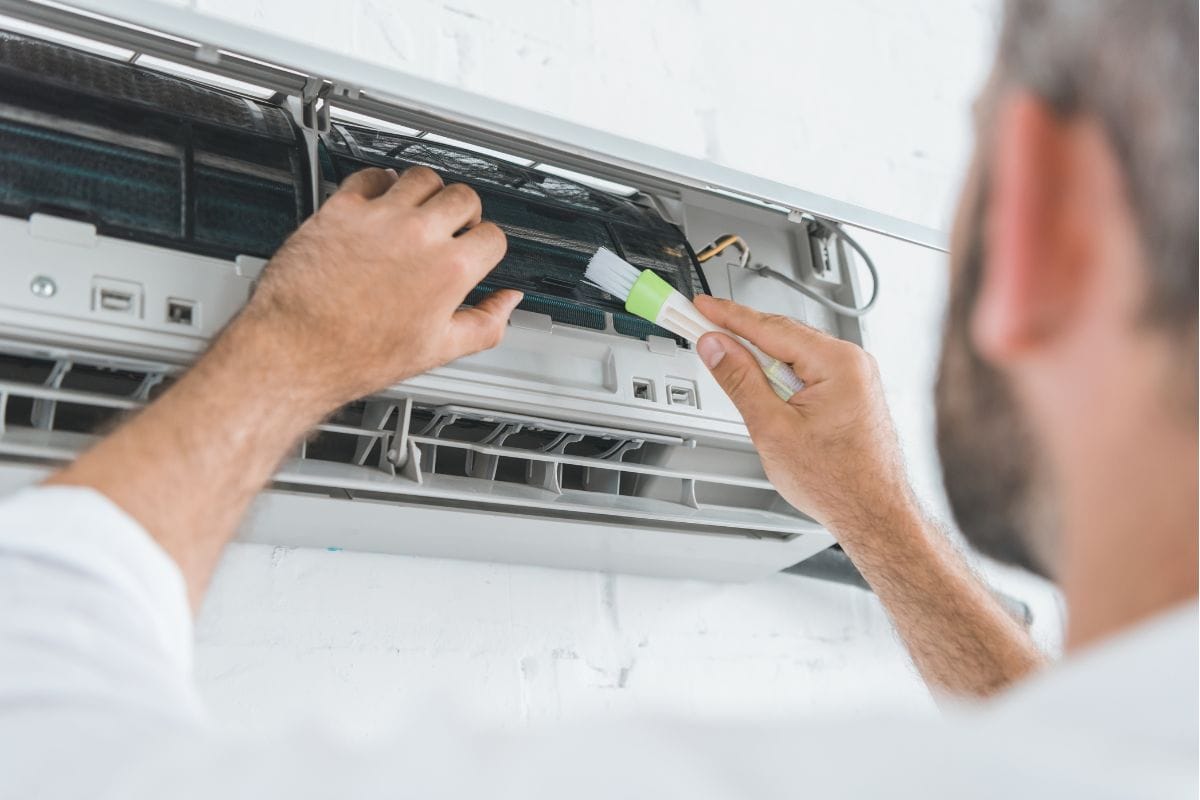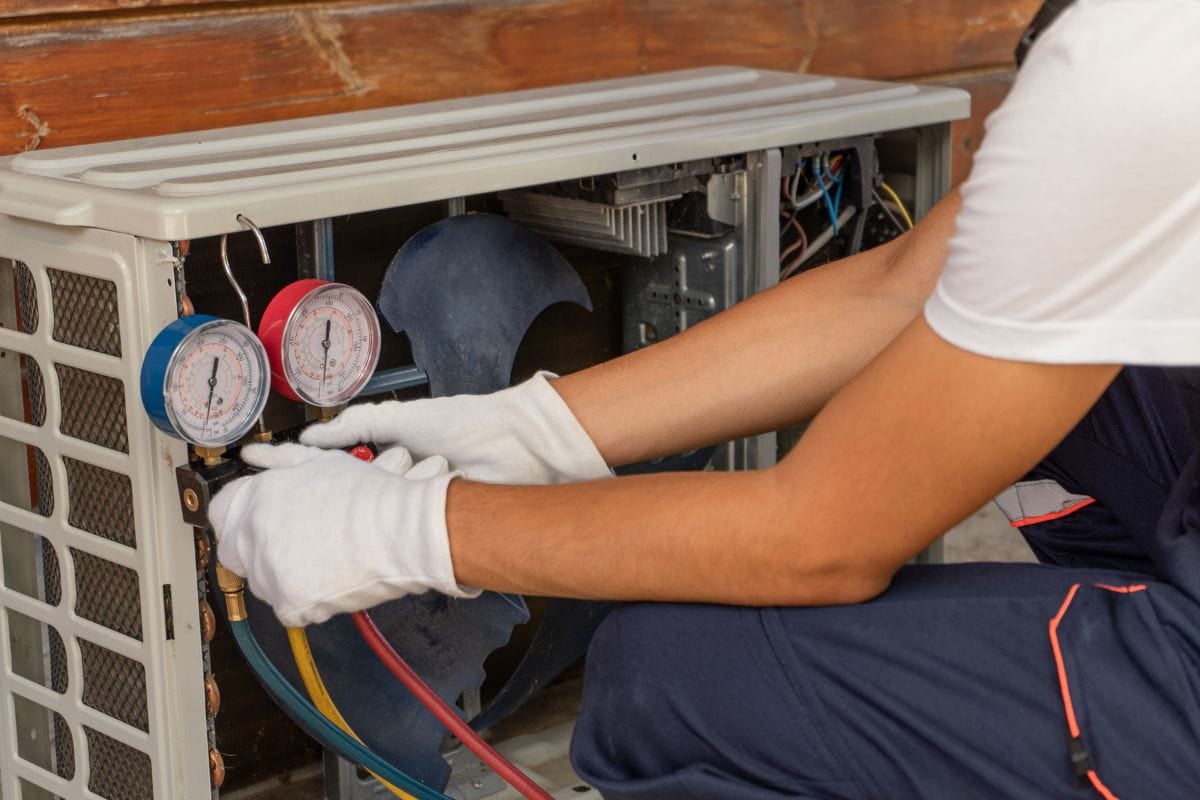After a long and hot summer day, you return home and turn on the PTAC unit to relieve yourself from the heat. The power is on, but there is no indication that it is cooling. You wonder what could be wrong and what to do about it. We gathered information from various sources and found the answer for you.
There could be several reasons why your PTAC isn't cooling. One common cause is a clogged or dirty filter. Other causes include low refrigerant levels, thermostat issues, or the unit's incorrect size for the room.
Continue reading for a more in-depth explanation of why your PTAC isn't cooling.

Reasons that PTAC unit may not be cooling

As you can see above, there are several reasons why your PTAC unit may not be performing its best.
Clogged filter
Filters in air conditioning units clean the air that circulates in the room. It collects dust, dirt, and contaminants that could harm your health. When a filter is not cleaned for an extended period, the dust and other particles it collects accumulate and block the airflow.
In more serious cases, it can potentially cause significant damage to the system. This is why most HVAC service providers recommend cleaning the unit regularly.
Cleaning the filters

It is recommended that you clean your PTAC filters once a month. There are a few ways to clean your filters. You can vacuum it, use detergent or a vinegar solution to clean it. Make sure that your PTAC is off before taking out the filter.
Vacuuming the accumulated dirt, dust, and other particles is sufficient if you clean your air filter regularly. To avoid damaging your filter, use the attachment without a brush when vacuuming. Run the vacuum several times to ensure that no particles remain, especially if you have pets who shed in the house. To avoid dents and damage, avoid applying too much pressure while cleaning.
Another method for cleaning the filter is to soak it in a tub of water and regular detergent. Move the filter back and forth to loosen the accumulation, then hose it down one side at a time to rinse it.
You can also clean the filter with a vinegar solution. Spray the solution on both sides of the filter, let it sit for ten minutes, and then rinse with running water.
If you clean the filter using the soak or spray methods, let it air dry before reinstalling it in your PTAC.
A genuine OEM air filter can be a suitable replacement for your damaged AC filter.
Click here to view this product on Amazon.
Other parts to clean regularly.

Aside from the front filter, the front cover of the PTAC and the outdoor fresh air filter should be cleaned regularly to avoid clogging. Before cleaning certain parts of your PTAC, could you turn it off?
Remove the front cover of the PTAC. Clean the dust or dirt from the front covers with a vacuum cleaner with a soft brush attachment. After vacuuming, wipe the cover down with a cloth dampened with water and detergent. Wipe them clean and allow them to dry before reinstalling the cover.
PTACs also have an outdoor fresh air filter that must be cleaned regularly. Take off the front cover and look for this filter. This filter can be mounted to or hidden behind an inlet door. Remove the filter if possible for better cleaning. Vacuum both sides of the filter with a soft brush attachment before replacing it.
If it cannot be removed, continue vacuuming while it is attached. Reinstall the front cover after cleaning the fresh air filter.
You can watch the step-by-step instructions for cleaning each part in this video by Direct Supply.
Low refrigerant level
Refrigerants conditions the air that cycles through your PTAC. It absorbs warm air from the environment and cools it. If your PTAC blows warm air, your refrigerant level may be low.
If your PTAC is low on refrigerant, it will give out cool air at the start of the cycle but gets warmer over time. Low refrigeration levels may cause serious damage to your unit and may even freeze the coils, which could restrict airflow.
Refrigerant leak

AC refrigerants or freon do not deplete over time. Low refrigeration indicates a leak in the unit because it cycles from liquid to gas to absorb heat and cool it before blowing it out without losing any of it.
This can be hazardous to both the household's health and the environment. Inhaling freon may result in headaches, nausea, vomiting, skin and eye irritation, coughing, and, in more severe cases, seizures.
When freon or refrigerant leaks are suspected, it is preferable to request an HVAC technician to diagnose and repair the problem as soon as possible.
Thermostat problems
PTACs are outfitted with thermostats. Thermostats aid in the temperature regulation of your unit. The heating and cooling functions may be turned off if the team does not reach the desired temperature. If the PTAC has an additional thermostat, it may have become frozen over time due to ice buildup.
Even when the fan is turned on, you can easily see if the heating and cooling functions are turned on. By selecting this option, you can enable cooling or heating in your PTAC.
If ice has formed on a remote thermostat, move it to a warmer room and use a hairdryer or heat gun to melt the remaining ice. Before you begin, make sure the unit is turned off.
If none of these are the issues, contact your local HVAC service provider to inspect and repair your PTAC unit.
Wrong size
If you have a recently installed PTAC that is not cooling your room, the BTU capacity is insufficient for the size of your room. You can calculate the BTU of your PTAC by multiplying the room size in square meters by 30.
Consider the height of your ceiling, the number of people who will be in the room, as well as the number of windows.
You can use a BTU calculator can help you get a better estimate of the PTAC size.
Consult your HVAC technician if you are still unsure about the unit size or if this is the problem with your unit.
Is a remote thermostat necessary for a PTAC unit?

Internal thermostats in PTACs regulate the temperature released by the unit. While a remote thermostat is not required, it does give the homeowner more control over the unit. A remote thermostat would allow you to control your PTAC unit from anywhere. Contact your HVAC technician if you are unsure how to set up and install the remote thermostat.
The Ecobee smart thermostat can be installed with the PTAC to help better regulate temperatures for your PTAC.
Click here to view this product on Amazon.
Do PTAC units draw outside air?
There are two ways for PTAC units to get air. One method is to cycle a refrigerant or to draw in fresh air. The unit draws air directly from the outside via the unit vent on the PTAC's outer side. Allowing the unit to draw in fresh air from the outside is similar to opening a window.
How is the PTAC different from a split-type AC?
It is a wise decision to conduct necessary research before making a purchase. This will allow homeowners or business owners to make more informed decisions about the air conditioning unit they want to buy. PTACs and split-type air conditioners help to condition the air in a room.
One noticeable difference is that the PTAC is larger than the split type. Split air conditioners can also condition the air throughout the house, whereas PTACs can only be used in one room. While both can be used in commercial and residential settings, the split type is the more common option.
How to reset the PTAC unit?
If there was a power outage or a tripped breaker, you might want to reset the system to avoid problems when it just runs continuously.
To reset your PTAC, turn off the system and wait five minutes before proceeding with the reset. Then push both the heating and cooling buttons. Turn the unit back on while holding them down. When the reset is complete, a red light beside the off button will light up.
In Conclusion
There are several possible causes for your PTAC not cooling the room. Clogged or dirty filters, low refrigerant levels, thermostat issues, or the unit's BTU being insufficient to cool the room are all possible causes.
You can self-diagnose a possible PTAC problem, but it is always better to have it checked by an HVAC professional.
To read more about air conditioners, click the links below.


